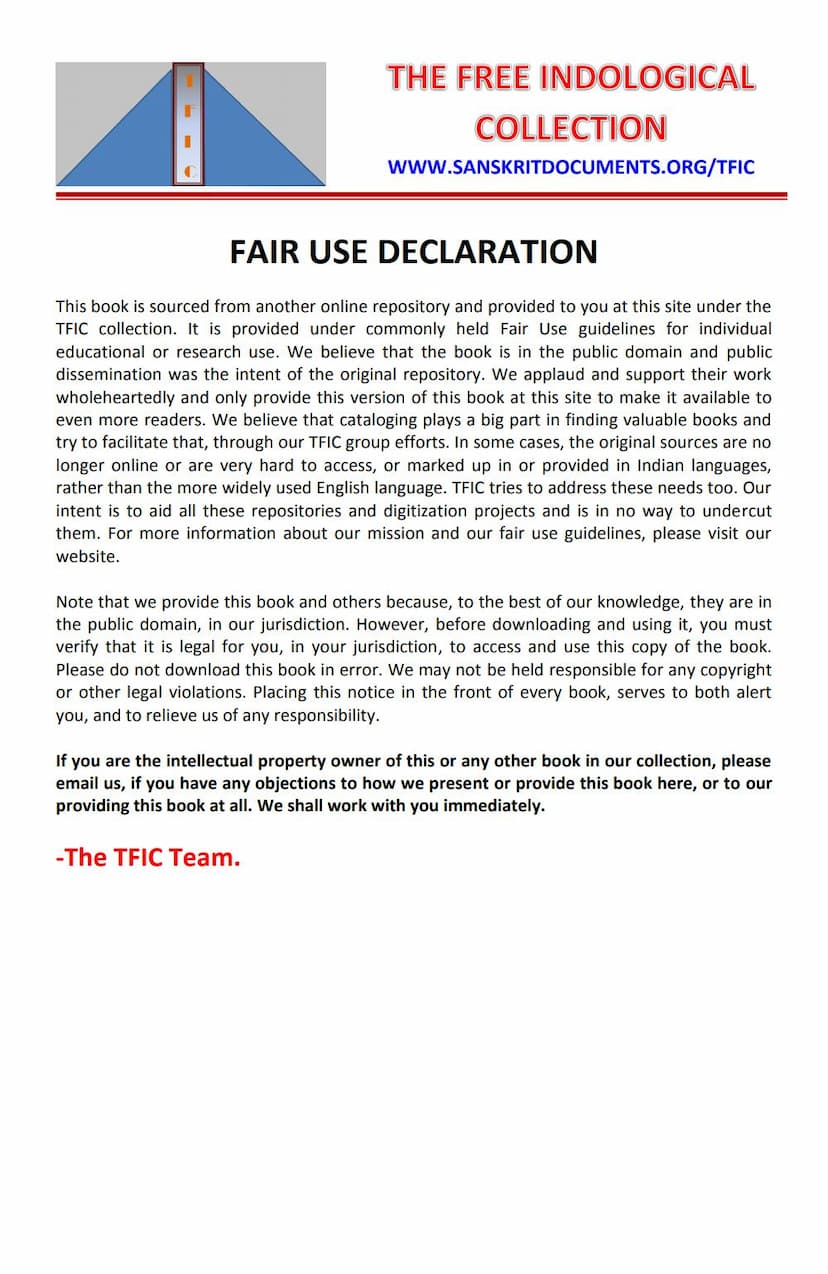Mahatma Pad Vachi Jain Bramhano Ka Sankshipta Itihas
Added to library: September 2, 2025

Summary
The provided text is a Jain historical document titled "Mahatma Pad-Vachi Jain Brahmins ka Sankshipta Itihas" (A Brief History of Jain Brahmins Known by the Title Mahatma) written by Vaktavarlal Mahatma. The publisher is also Vaktavarlal Mahatma, and the publication date is Samvat 2002 (Veer Samvat 2471).
The text focuses on the history and lineage of certain Jain Brahmin families, particularly those who were associated with the royal court and held positions of respect and influence. The content delves into their genealogy, contributions, and significant life events.
Here's a breakdown of the key aspects presented in the provided pages:
Genealogy and Lineage:
- Early Ancestors: The history begins with the migration of ancestors from Merta to Kailashpuri (likely referring to Udaipur). Rupachandji is mentioned as an early ancestor who settled in Kailashpuri, establishing a "poshal" (a place of residence or religious institution).
- Detailed Family Trees: Several pages are dedicated to presenting family trees, tracing descendants through generations. Names like Rupachandji, Ramchandji, Amarchandji, Shubh-karnji, Belaji, Falaji, Heirachandji, Chhotamji, Deepchandji, Kalyan-dasji, Pokharji, Lakhmidasji, Kaluji, Brahmachari Kalyanji, Manji, Dhanji, Gordhanji, Bhagwanji, Chatur-bhujji, Dragji, Khemrajji, Champalalji, Premchandji, Vaktavarlalji, Daji, Mohi, Rakhav-dasji, Vasantilalji, and Ganpatlalji are listed, indicating the extensive genealogical records maintained.
- Notable Figures: Specific individuals are highlighted for their accomplishments, such as Khemrajji, who was proficient in astrology, mathematics, geography, and astronomy. His foresight regarding the 1857 Indian rebellion is mentioned, where he predicted the outcome and the location of a key battle. His accurate prediction earned him royal recognition and honors from the Maharana.
Contributions and Royal Patronage:
- Establishment of Institutions: The text mentions the establishment of a "Shambhuratan Pathshala" during the reign of Maharana Shambhusinhji, where students were educated.
- Royal Honors and Recognition: The ancestors and prominent figures in the lineage received significant honors and recognition from the rulers of Mewar (Udaipur). These included titles, gifts of gold bangles, royal attire, and positions within the court.
- Financial Support for Religious Activities: There are mentions of donations and grants received by the family, as well as their own contributions to religious and charitable causes.
- Involvement in Royal Affairs: The family members were involved in important royal decisions and administrative matters. Their expertise in astrology was often sought for state affairs.
Jain Philosophy and History:
- Ancient Jainism: The text strongly emphasizes the antiquity of Jainism, drawing parallels with Vedic scriptures and Puranas. It cites verses from the Rigveda, Yajurveda, Bhagavad Gita, and Puranas to demonstrate the ancient roots of Jain principles and Tirthankaras.
- Connection with Vedic Traditions: The author highlights the close relationship between Jainism and Brahmanism, suggesting that Jain principles, such as "Ahimsa Paramo Dharma" (non-violence is the supreme dharma), influenced Vedic practices, leading to the discontinuation of violent sacrifices.
- Tirthankaras and Jain Teachings: The text references various Jain Tirthankaras, including Rishabhdev (Adinath), Nemnath, and Mahavir. It discusses their teachings and the Jain worldview.
- Scholarly Support: The author references modern scholars and historical texts, both Indian and European, to support the claims about Jainism's ancient origins and its influence on other religions.
Personal Life and Achievements of the Author:
- Author's Background: The text briefly touches upon the author's (Vaktavarlal Mahatma) personal life, including his birth, parents, education, and marriages.
- Family and Services: It details his employment in the royal service, his contributions to the establishment of certain institutions, and his personal adherence to scholarly pursuits.
Overall Theme: The "Mahatma Pad-Vachi Jain Brahmins ka Sankshipta Itihas" aims to chronicle the historical and cultural significance of a particular lineage of Jain Brahmins. It showcases their intellectual prowess, their loyalty and service to the ruling dynasties, and their deep connection to Jain philosophy and traditions. The text also serves as a testament to the enduring legacy of Jainism in India, emphasizing its ancient origins and its profound impact on Indian culture and religion.
The provided pages offer a glimpse into a meticulously researched historical account, highlighting the importance of preserving such family histories and their connection to broader religious and cultural movements.